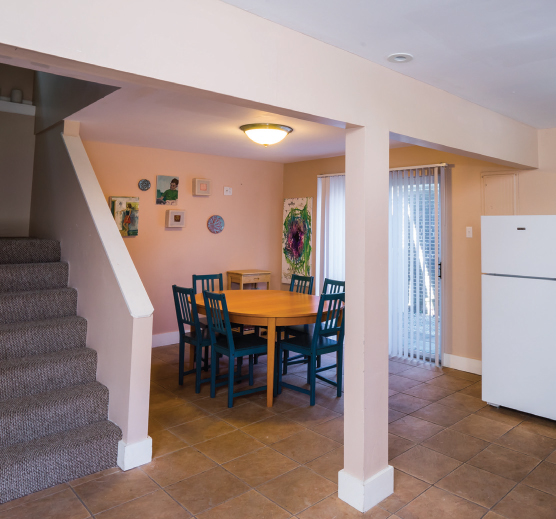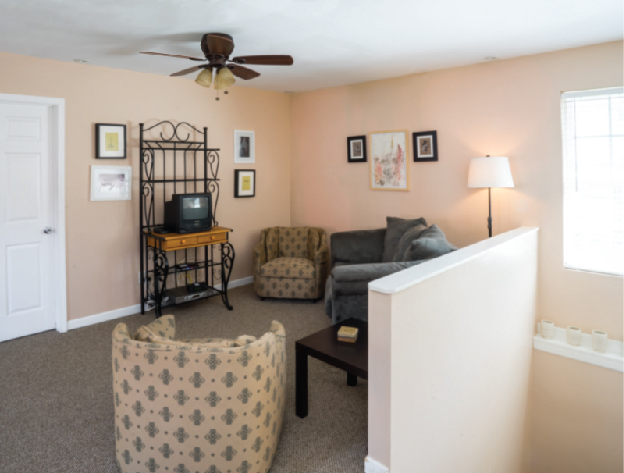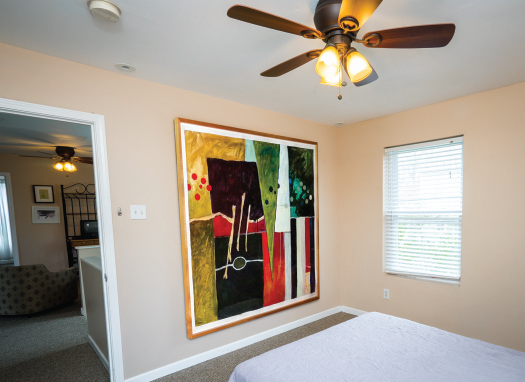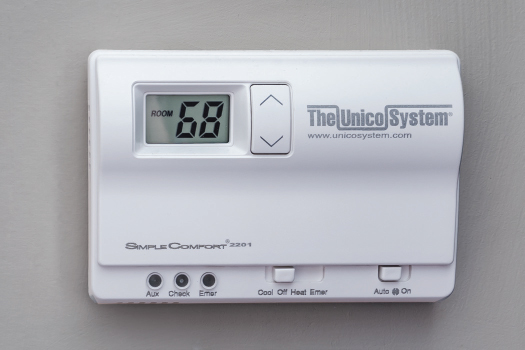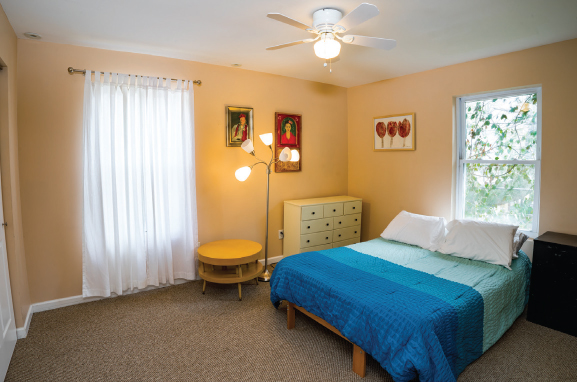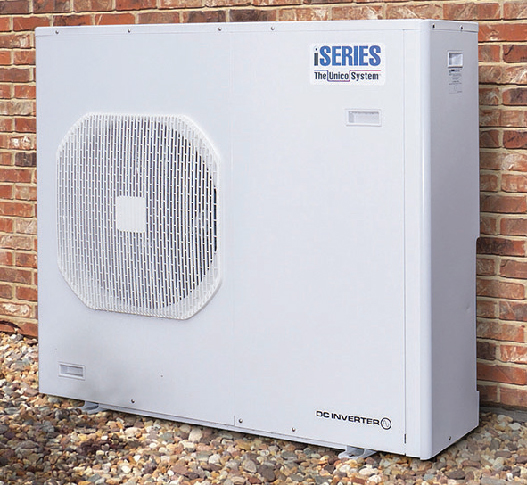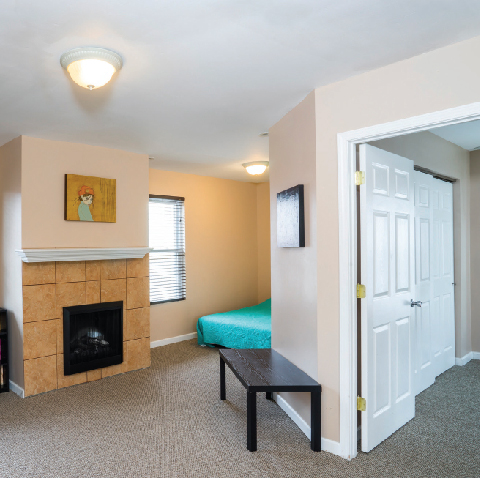Carriage House
Modern Comfort Enhances Carriage House Bed & Breakfast in Historic Neighborhood
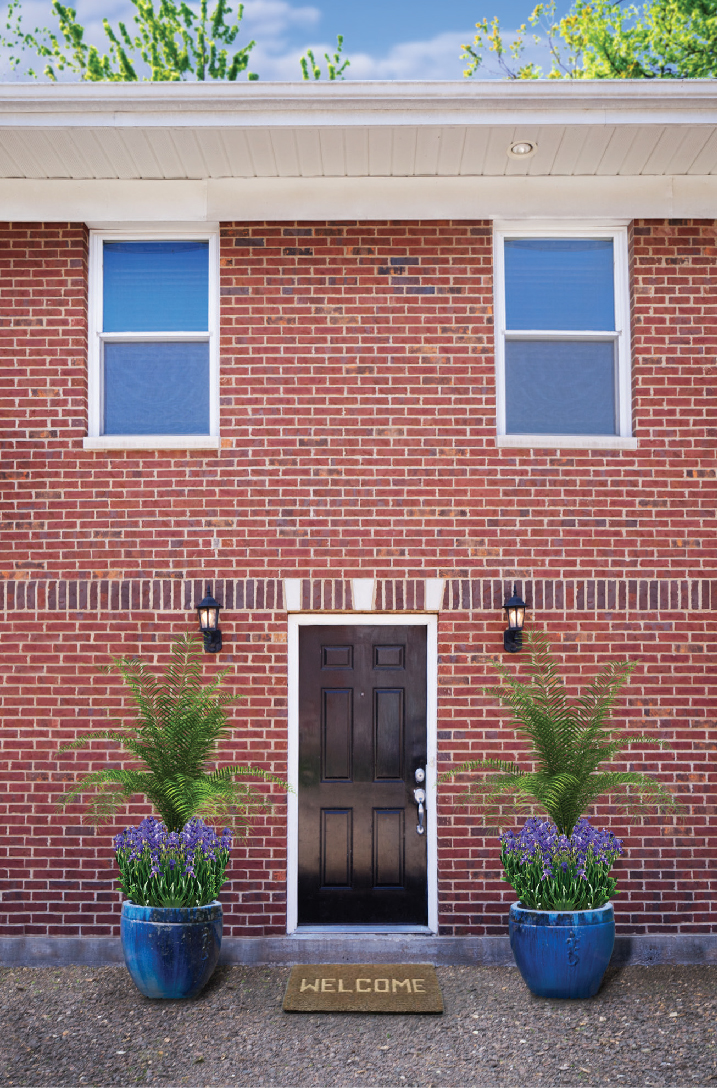
The historic Central West End district in St. Louis showcases architecturally significant homes built during the famous 1904 World’s Fair. Many of these turn-of-the-century gems included a detached carriage house, a common feature of the era. While most of these carriage houses were either razed or converted to garages over the years, some homeowners opted to rehabilitate these spaces to serve as stand-alone guest quarters.
Interestingly, both were the case with a carriage house located on the back lot of a 3-story brick Georgian house. While the previous owners considered the original carriage house to be beyond repair, they wanted to keep a separate living space for out-of-town guests while also adding a modern garage. So, they tore down the original structure in 2006 and built a new 2,180 square foot structure within the original footprint. This new “carriage house” features a 2-car garage and full kitchen at ground level and a second floor containing a living room, two bedrooms and two full baths.
There was just one problem with the new house, though. The contractors had installed a woefully undersized central heating and cooling system, unable to keep up with the Midwest’s arctic winters and scorching summers. When the current owners occupied the main home in 2012, they wished to rent out the detached carriage house as a bed and breakfast, but had to find a solution to this heating and cooling problem first.
Strategy
As chance would have it, Unico, Inc., manufacturers of small duct central heating and air conditioning, were seeking a test subject for their new iSeries outdoor inverter heat pump. The carriage house offered a perfect laboratory for this new product because of its limited space to run traditional ducting, and outdoor temperature swings that changed seasonally from below 0°F to above 100°F. The Unico System, with its small, flexible ducts and unobtrusive outlets, would solve the first problem, while the new iSeries outdoor unit, with an operating range of -25° F to 122° F, would solve the second.
The chief features and benefits of the Unico System – its ability to fit into tight spaces; small, unobtrusive outlets that blend into any decor; greater comfort with superior humidity removal and even, draft-free temperatures – make it an ideal choice for these types of retrofit projects. In addition, the iSeries outdoor inverter unit works efficiently to provide central heating and air conditioning in sub-zero winters and summer temperatures over 100° F – something traditional outdoor heat pumps can’t do. The iSeries also has a slimmer design than conventional outdoor A/C condensing units – another asset in this space-challenged installation.
In order to properly size the replacement central heating and cooling system for this project, Unico factory engineers and installers began by conducting a “heat gain/ heat loss” study. This is a series of calculations that take into account the seasonal temperature changes and construction factors that have an impact on temperature fluctuations in a home, such as insulation (or, building “tightness”), doors, windows, room sizes, etc.
In addition to the heat gain/heat loss calculations, Unico technicians sketched out a basic layout for the three main components of the indoor part of the system: return air system, main trunk and, supply tubing/outlets. All Preferred Unico Contractors perform these actions — the heat gain/heat loss and basic system sketch — in order to provide homeowners with estimated materials and labor hours required for an accurate bid of the final system’s cost.
In this installation, an unused attic was the logical choice for the placement of the indoor return air system, air handling units, main trunk and supply ducts. This unconditioned space allowed for a perimeter layout of the insulated Unico System (which allows for less than 1% duct leakage) to deliver air to all areas of the conditioned space with white ceiling outlets blending into the white painted ceilings of the living areas.
The outdoor components of this system also had specific requirements. The location of the outdoor unit is a narrow patio off the carriage house kitchen. This area is a key feature of the bed and breakfast, allowing guests to enjoy a private area for barbeques and gatherings. The slim iSeries unit allows more space for guests and operates quietly, unlike noisy condensing units and heat pumps.
Results
Since its installation, guests have consistently remarked how comfortable they’ve felt during both winter and summer stays. Many assume the unobtrusive round celling outlets are part of the lighting system and are pleasantly surprised to learn that they are indeed part of the central heating and cooling system. Guests have also remarked about how quiet the outdoor iSeries unit is, with one going so far as to say, “I thought it was an unused component for the garage. We could barely hear it!”
Location
St. Louis, MO
Unico Contractor
Unico System factory engineers and technicians
